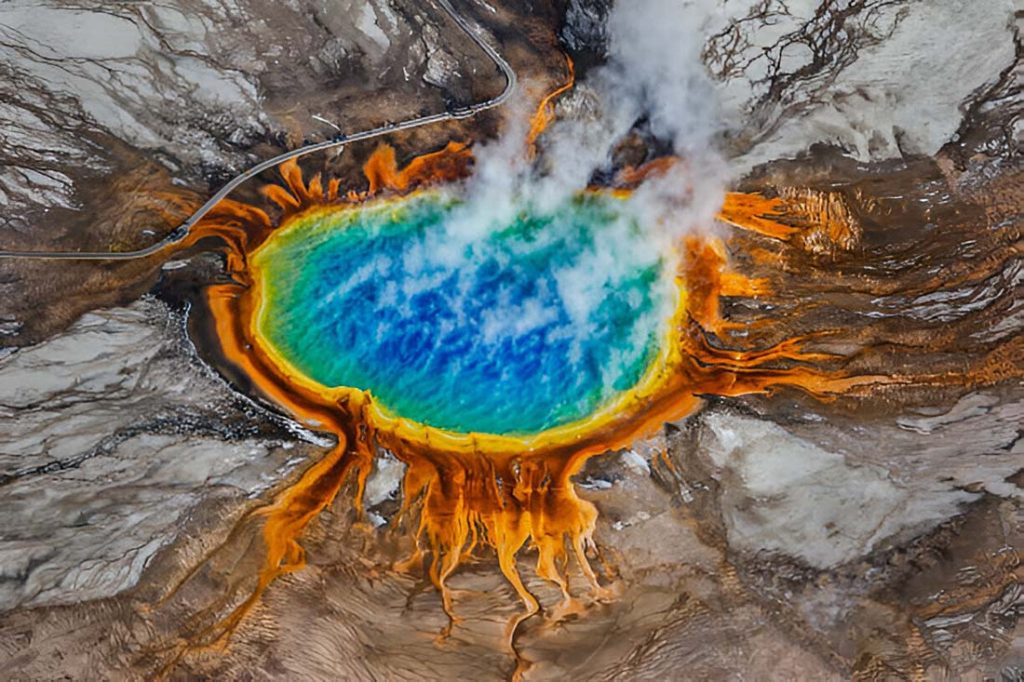
In the realm of natural wonders, natural and thermal springs stand as fascinating testimonials to the Earth’s geothermal activity. These bubbling pools of warmth not only offer therapeutic benefits but also serve as captivating destinations for travelers seeking solace amidst breathtaking landscapes.
In our journey to uncover the planet’s most remarkable natural hot springs, we delve into the depths of geothermal wonderlands, from sprawling volcanic terrains to remote mountain valleys. Join us as we traverse continents and unveil the top ten largest hot springs, each boasting its own unique charm and allure.
From the majestic expanses of Yellowstone National Park service to the remote reaches of Iceland’s rugged terrain, these natural marvels promise an immersive experience, blending relaxation with awe-inspiring natural beauty.
Prepare to be enchanted as we embark on a journey to discover the world’s largest natural hot springs, where the forces of nature converge to create landscapes of unparalleled splendor and rejuvenation.
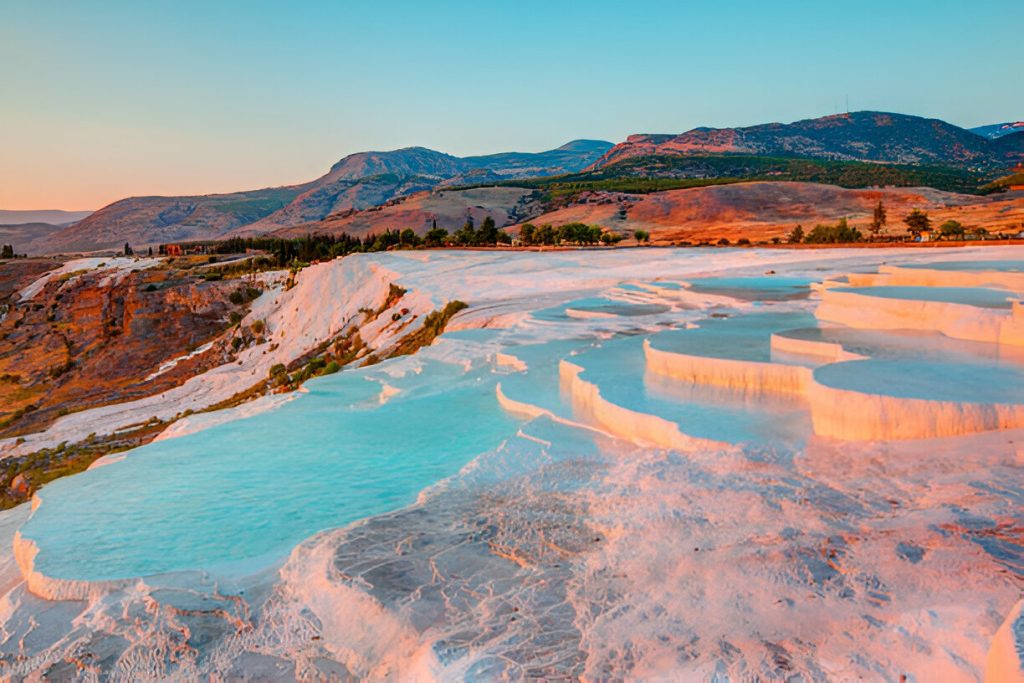
Largest 10 Hot Springs in the World
Ranking the ten largest and best hot springs in the entire world, can be a bit challenging due to the varying criteria used to measure size (volume, surface area, depth, etc.), and accurate data for all hot springs may not be readily available. However, general knowledge and available information from our trusted friend Google, here’s a list of ten of the largest natural hot springs:
While not one of the largest by traditional measurements, Chena Hot Springs in Alaska deserves a mention for its unique offerings. This cozy and developed interior hot spring resort provides a serene getaway with steamy waters that remain at 106 degrees Fahrenheit, even amidst ice-laden winter scenery. What sets Chena Hot Springs apart is the opportunity it offers visitors to witness the mesmerizing northern lights while soaking in its warm embrace, making it a noteworthy addition to any hot spring enthusiast’s bucket list.
1. Grand Prismatic Spring – Yellowstone National Park, Wyoming
A mesmerizing natural wonder, boasting vivid hues of blue, green, and orange against a backdrop of steamy geothermal activity.
2. Frying Pan Lake – Waimangu Volcanic Rift Valley, New Zealand
The world’s largest hot spring offers a breathtaking vista of turquoise waters shimmering amidst volcanic steam vents and vibrant mineral deposits.
3. Boiling Lake – Dominica
A natural wonder, this thermal lake is shrouded in mist and surrounded by lush rainforest, where hot volcanic gases bubble through its steaming waters, creating an otherworldly spectacle.
4. Blue Lagoon, Iceland
A geothermal oasis, where milky-blue mineral-rich waters contrast with volcanic black rocks, offering visitors a soothing and surreal bathing experience amidst Iceland’s rugged landscape.
5. Great Boiling Spring – Nevada, USA
A captivating geothermal marvel, with its bubbling turquoise waters and steaming pools creating a scene straight out of a surreal desert dreamscape.
6. Waimangu Cauldron – Waimangu Volcanic Rift Valley, New Zealand
Where boiling waters churn amidst vibrant mineral formations, painting an otherworldly landscape of natural wonder.
7. Morning Glory Pool – Yellowstone National Park, USA
A stunning natural wonder, with its vibrant blue waters and intricate mineral formations creating a mesmerizing display of geothermal beauty.
8. Mammoth Hot Springs – Yellowstone National Park, USA
A breathtaking geological masterpiece, with its terraces of travertine cascading down like frozen waterfalls, showcasing the dynamic forces of nature at work.
9. Pamukkale Thermal Pools – Turkey
A surreal spectacle where terraces of white travertine cascades create a stunning contrast against the lush green landscape, offering visitors a unique and rejuvenating bathing experience.
10. Hot Water Beach – Coromandel Peninsula, New Zealand
An inspiring place where visitors can dig their own pools in the sand and soak in the naturally heated waters while waves crash nearby.
Keep in mind that this list is not exhaustive, and there are other significant hot springs around the world. Additionally, some hot springs may change in size due to natural processes, so rankings may vary over time.
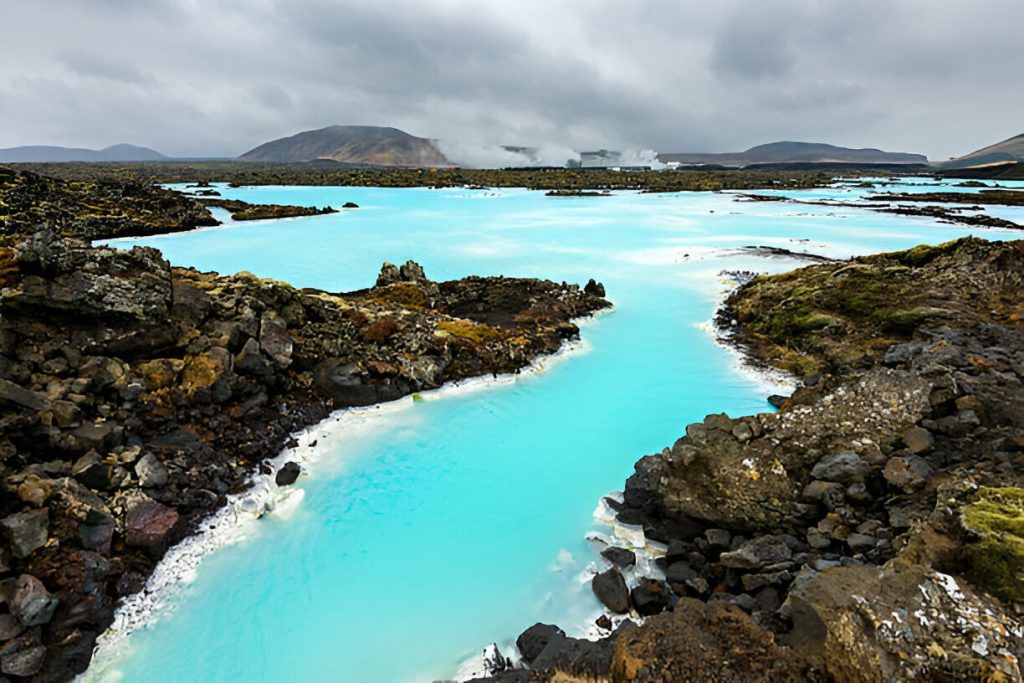
Hot Springs vs. Geysers: What’s the Difference?
Hot springs and geysers might seem like siblings in the family of natural wonders, but they’re actually more like distant cousins with unique personalities. Let’s dive into the bubbling world of these thermal marvels and explore what sets them apart!
Alright, picture this: you’re wandering through a rugged landscape, and suddenly, you stumble upon a steaming pool of water nestled amidst the rocks. Congratulations, my friend, you’ve just discovered a spring! These bad boys are like nature’s jacuzzis, where the Earth’s toasty core decides to throw a spa day for anyone lucky enough to stumble upon them. However, it’s important to note that the soaking experience can significantly vary with the air temperature. While the feed from natural geothermal springs maintains a constant warmth, the main body of water in hot springs can feel more or less inviting depending on the surrounding temperatures and air temperature, impacting your overall experience.
But wait, there’s more! Let’s talk about geysers. You’ve probably heard of Old Faithful, right? That iconic geyser in Yellowstone that puts on a show all year round like clockwork? Geysers are like the rockstars of the thermal world. They’re hot springs with a flair for the dramatic, shooting jets of scalding water and steam into the air with a theatrical flourish. It’s like they’re saying, “Hey, check me out, I’m the Beyoncé of the geothermal scene!”
So, what’s the big difference? Well, hot springs are chill. Literally. They’re just content to hang out, simmering gently and inviting you to take a dip and soak away your worries. Geysers, on the other hand, are the divas of the thermal world. They demand attention, erupting sporadically and putting on a show that’ll leave you speechless.
But hey, whether you’re soaking in a serene spring or watching in awe as a geyser puts on its explosive performance, one thing’s for sure: these natural wonders are guaranteed to leave you feeling amazed by the power and beauty of Mother Nature. So next time you’re out exploring the great outdoors, keep an eye out for these thermal treasures—you never know what kind of adventure awaits!
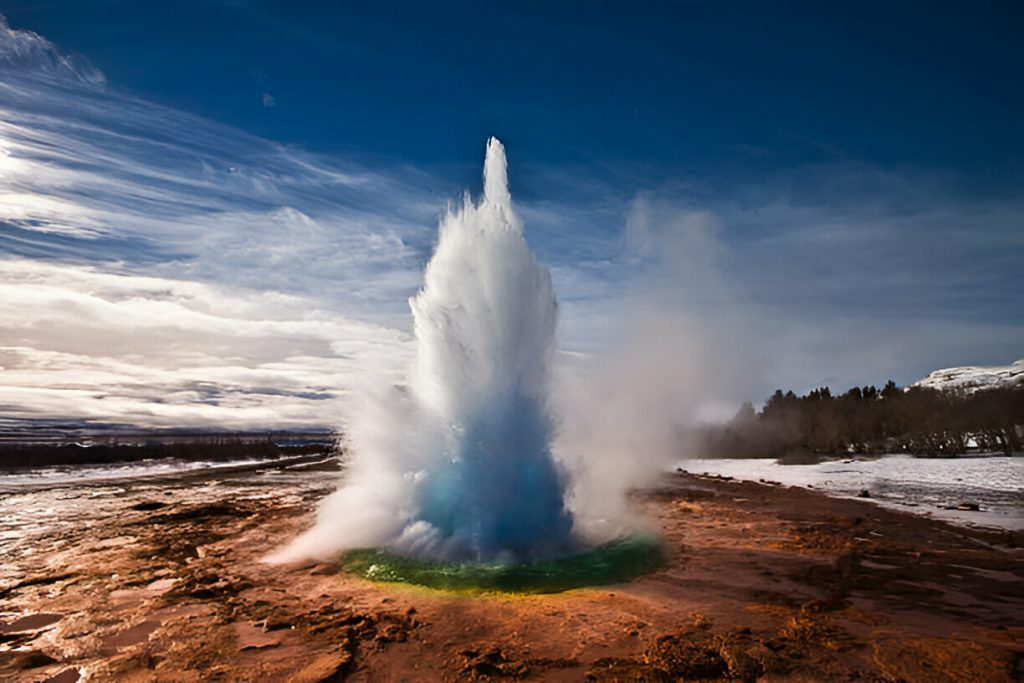
What are the world’s best Geysers?
When it comes to the world’s several dozen geysers, Mother Nature doesn’t hold back. From the iconic spouts of Yellowstone to the remote corners of New Zealand, the world is peppered with these explosive wonders. Here are some of the world’s geysers that’ll leave you awestruck.
1. Old Faithful Geyser, Yellowstone National Park, USA: Old Faithful Geyser needs no introduction. As the most famous geyser on the planet, it delights visitors with its predictable eruptions, shooting hot water and steam up to 180 feet into the air like clockwork.
2. El Tatio, Chile: Nestled high in the Andes Mountains, El Tatio is one of the highest geyser fields in the world. Visitors brave the chilly morning air to witness the spectacular sight of steamy geysers erupting against the backdrop of the rugged Andean landscape.
3. Strokkur, Iceland: In the land of fire and ice, Strokkur steals the show with its frequent eruptions. Located in the Geysir Geothermal Area, this geyser blasts scalding water up to 100 feet high every few minutes, offering a mesmerizing display of nature’s power.
4. Pohutu Geyser, Te Puia, New Zealand: Down under in New Zealand, Pohutu Geyser commands attention with its impressive eruptions. As the largest geyser in the southern hemisphere, it shoots water up to 100 feet high, leaving spectators in awe of its raw beauty.
5. Fly Geyser, Nevada, USA: Tucked away in the Black Rock Desert of Nevada, Fly Geyser is a hidden gem waiting to be discovered. Its otherworldly appearance, with vibrant colors and mineral-rich formations, makes it a photographer’s dream and a testament to the wonders of nature.
How Often Do Geysers Erupt?
How often a geyser erupts can vary widely depending on a variety of factors, including the specific characteristics of the geyser, its geological setting, and the local environmental conditions. Some geysers, like Old Faithful in Yellowstone National Park, erupt with remarkable regularity, often every 60 to 110 minutes. Others may be more sporadic, with eruptions occurring hours, days, or even weeks apart.
The interval between eruptions is determined by factors such as the rate of water accumulation in the geyser’s underground plumbing system, the pressure of the steam and gases building up beneath the earth’s surface itself, and the geological features that influence the geyser’s behavior.
It’s important to note that while some geysers are highly predictable and erupt with remarkable consistency, others are much less so, making it difficult to forecast their eruptions with precision. Visitors to geyser sites are often advised to consult park rangers or local experts for the most up-to-date information on geyser activity and eruption predictions.
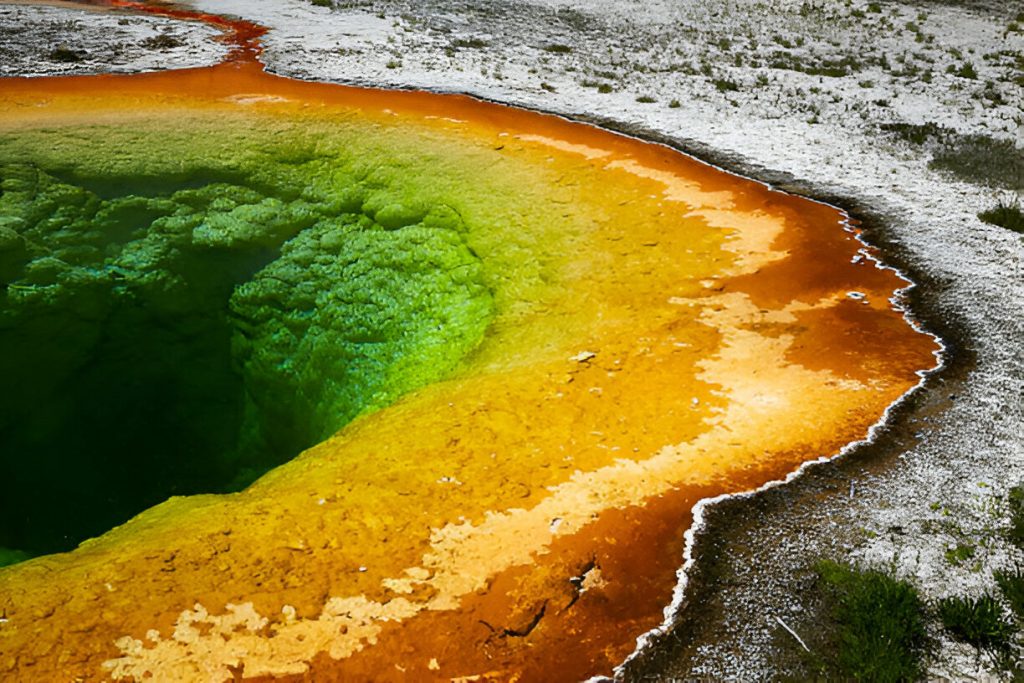
What is the hot spring capital of the world?
The hot springs capital of the world is often considered to be the city of Beppu, located on the island of Kyushu in Japan. Beppu is renowned for its abundance of geothermal hot springs, known as “onsen” in Japanese, which have been attracting visitors for centuries.
Beppu is home to over 2,000 hot springs sources, making it one of the most geothermally active areas in Japan. These hot springs vary in temperature, mineral content, and therapeutic properties, offering a wide range of bathing experiences for visitors to enjoy.
The city is divided into eight distinct hot spring areas, each with its own unique character and attractions. These areas include Beppu Onsen, Kannawa Onsen, Myoban Onsen, and Kamegawa Onsen, among others, each offering a different ambiance and bathing experience.
In addition to traditional hot spring baths, Beppu also features a variety of other attractions, such as mud baths, sand baths, steam baths, and even hot spring foot baths located along the city’s streets.
With its rich history, diverse range of hot springs, and stunning natural surroundings, Beppu has rightfully earned its reputation as the hot springs capital of the world, attracting visitors from across Japan and around the globe who seek relaxation, rejuvenation, and a taste of Japan’s ancient bathing culture.
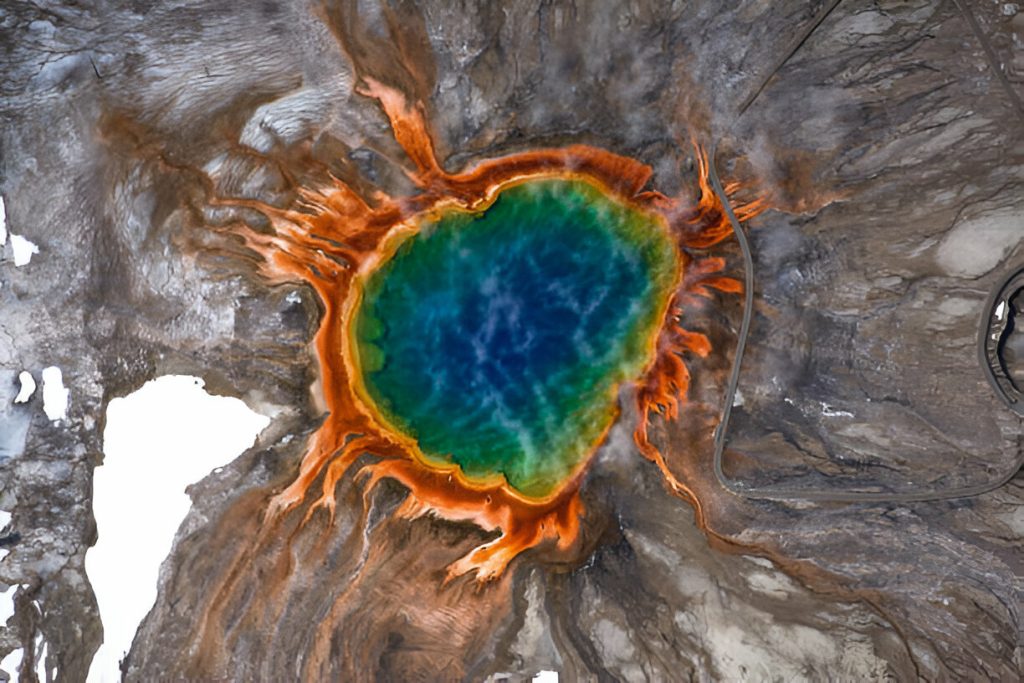
Does the UK have any hot springs?
Yes, the United Kingdom does have hot springs, although they are not as numerous or well-known as those found in countries like Japan or Iceland. The most famous hot spring in the UK is probably the Roman Baths in the city of Bath, England.
The Roman Baths in Bath are a well-preserved ancient bathing complex that dates back to Roman times. The hot spring water that feeds the baths comes from the nearby Mendip Hills and emerges at a temperature of around 46°C (115°F). Visitors to the Roman Baths can explore the historic site, learn about its fascinating history, and even sample the mineral-rich thermal waters in a modern spa facility. Additionally, some luxury spas and resorts in the UK offer amenities like hot tubs and an indoor swimming pool for guests seeking a warm, relaxing dip in addition to the natural hot springs.
In addition to the Roman Baths, there are a few other hot springs scattered throughout the UK, although they are typically smaller in scale and less developed. For example, there are hot springs in the village of Llanwrtyd Wells in Wales, as well as in the town of Buxton in Derbyshire, England.
While the UK may not be known for its hot springs on the same level as some other countries, the presence of these natural thermal waters adds an interesting dimension to the country’s cultural and historical landscape, offering visitors a unique opportunity to experience the healing properties of mineral-rich hot springs in a British setting.
Roman Baths
The Roman Baths are a historic and cultural landmark located in the city of Bath, a unesco world heritage site in England. Dating back to Roman times, the Roman Baths complex is one of the best-preserved ancient bathing sites in the world and is renowned for its architectural grandeur and historical significance.
The Baths were built around the natural hot springs that emerge from the ground in the area, which have been flowing for thousands of years. The Romans, who occupied Britain from the 1st to the 5th century AD, recognized the therapeutic properties of the hot spring water and constructed a complex of bathing facilities around it.
The Roman Baths complex consists of several key features:
The Sacred Spring: This is the natural hot spring from which the thermal water emerges. The Romans believed the spring to be sacred and dedicated it to the goddess Sulis Minerva, combining local Celtic beliefs with Roman mythology.
The Great Bath: The centerpiece of the complex, the Great Bath is a large pool filled with hot spring water. It was used by the Romans for bathing and socializing and is surrounded by grand Roman architecture, including columns and statues.
The Roman Temple: Adjacent to the Great Bath is the remains of a Roman temple dedicated to Sulis Minerva, where worshipers would make offerings and prayers to the goddess.
The Roman Bath House: This area includes a series of rooms and chambers where visitors could move through a sequence of bathing rituals, including hot, warm, and cold baths, as well as saunas and massage rooms.
Today, the Roman Baths are a major tourist attraction and museum, allowing visitors to explore the ancient ruins, learn about Roman life and culture, and even sample the mineral-rich thermal waters in a modern spa facility. The site offers a fascinating glimpse into the history of bathing and the enduring legacy of Roman civilization in Britain.
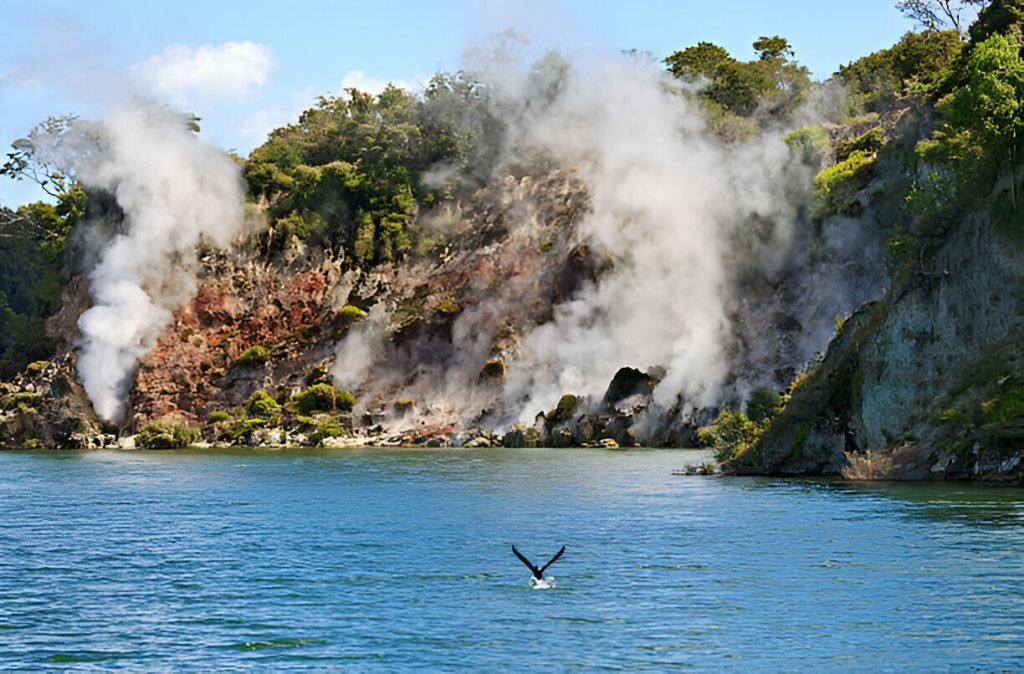
Is it OK to swim in hot springs?
Hot springs have long captured the imagination of travelers seeking relaxation, rejuvenation, and a connection with nature’s wonders. But amid the allure of soaking in warm, mineral-rich waters, a common question arises: Is it really OK to swim in hot springs? Let’s explore the pros and cons.
The Pros:
Therapeutic Benefits: Hot springs are renowned for their potential health benefits, including relaxation, stress relief, and relief from muscle and joint pain. The mineral content of the water, which can vary depending on the spring’s location and geological makeup, is believed to have healing properties that can soothe both body and mind.
Natural Beauty: Many hot springs are located in stunning natural settings, surrounded by rugged landscapes, lush forests, or panoramic mountain views. Swimming in a hot spring can be a truly immersive experience, allowing you to connect with nature in a unique and memorable way.
Cultural and Historical Significance: Hot springs have been used for centuries by indigenous peoples and cultures around the world for bathing, rituals, and healing ceremonies. Swimming in a hot spring can offer a glimpse into this rich cultural heritage and provide a sense of connection with the past.
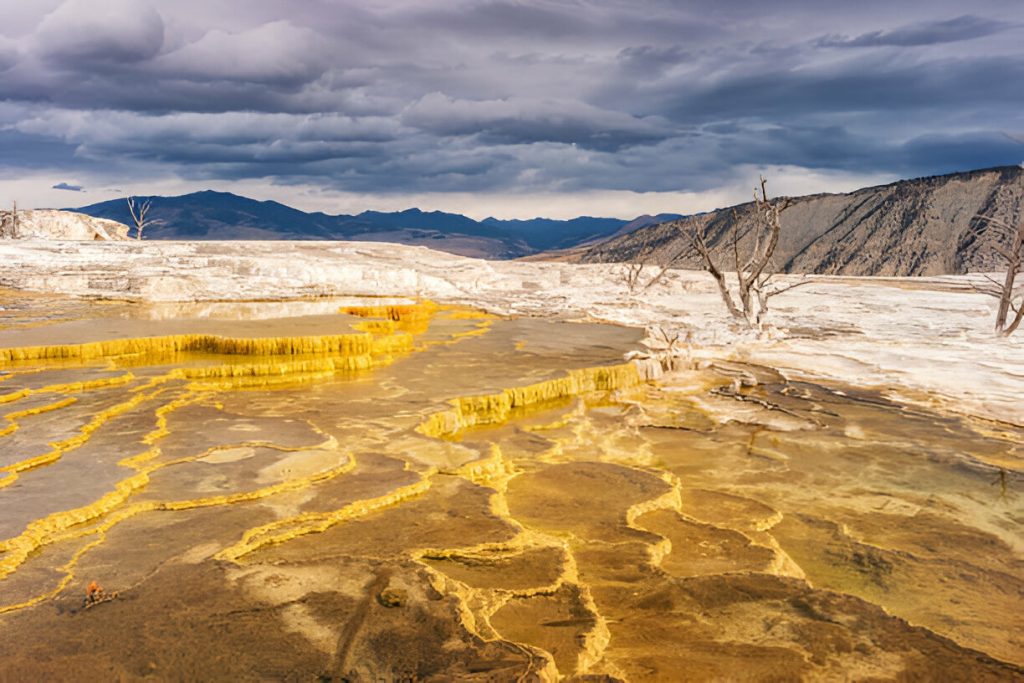
The Cons:
Health and Safety Concerns: While hot springs can offer therapeutic benefits, they also pose potential risks to health and safety. Hot spring water may contain bacteria or other microorganisms that can cause infections, especially if ingested or if there are open wounds or cuts on the skin. Additionally, the temperature of the water in some hot springs can be dangerously hot, leading to burns or heat-related illnesses if not approached with caution.
Environmental Impact: Increased visitation to hot springs can have negative impacts on the surrounding ecosystem, including erosion, habitat destruction, and pollution from litter or contaminants. It’s important for visitors to hot springs to practice Leave No Trace principles and minimize their impact on the environment.
Cultural Sensitivity: Some hot springs are considered sacred or culturally significant to indigenous communities, and swimming in them may be seen as disrespectful or inappropriate. It’s important for visitors to be aware of and respect the cultural norms and traditions associated with each hot spring they visit.
Conclusion
From the active geysers of Yellowstone to the tranquil pools of Iceland and beyond, embarking on a journey to explore the 10 largest and best hot springs in the world is like diving into a bubbling cauldron of adventure and relaxation.
These thermal springs full of hot water and excitement offer a tantalizing mix of therapeutic benefits, stunning scenery, and cultural intrigue. So grab your swimsuit, pack your sense of wonder, and get ready to immerse yourself in the warm embrace of Mother Nature’s most spectacular hot springs.
Whether you’re seeking to reduce stress levels or engage in religious rituals, enjoy rejuvenation in warm waters on an uninhabited island, or simply a splash of excitement on the edge of mountain peaks, these geothermal gems are sure to leave you feeling refreshed, inspired, and ready for your next aquatic adventure!